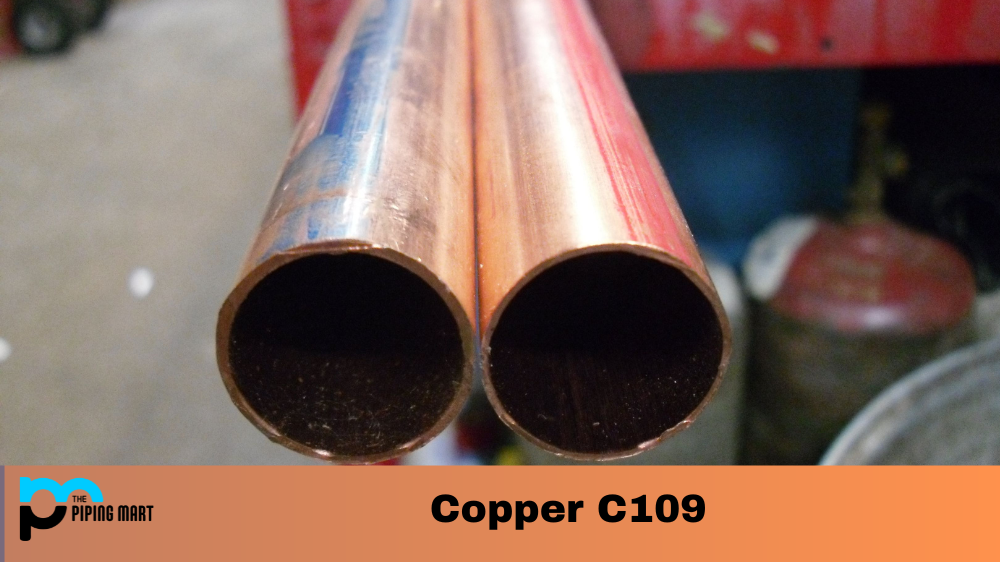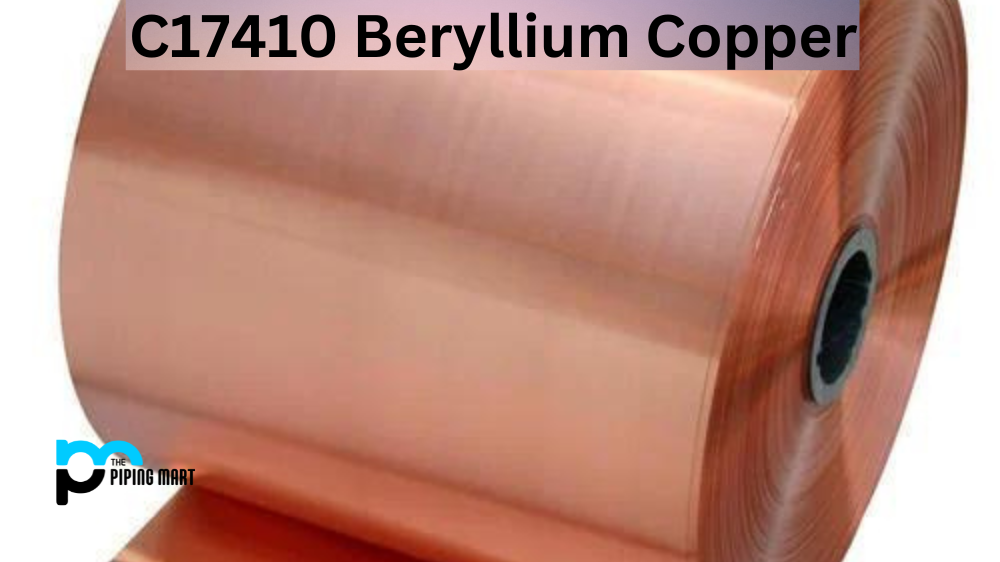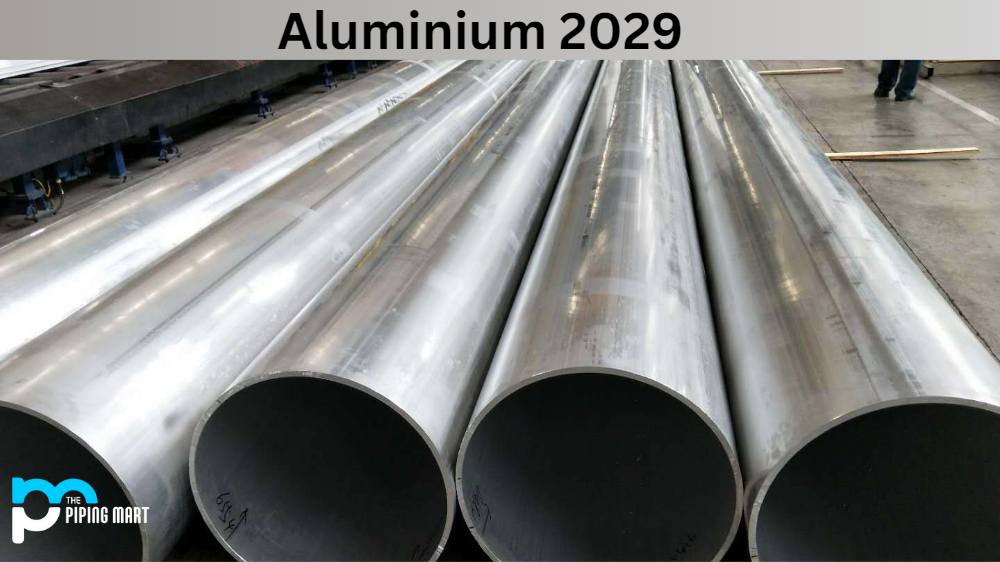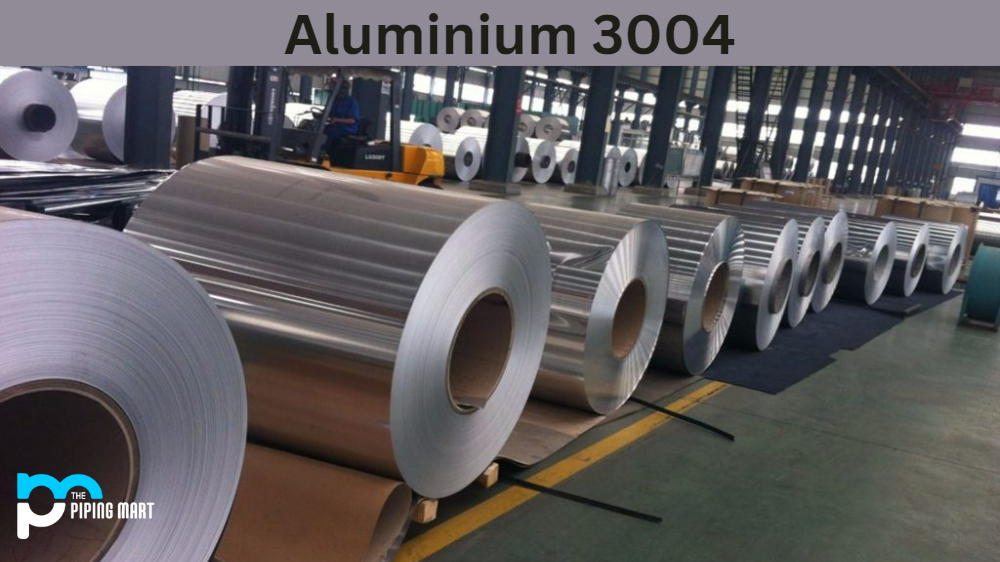Copper C109 is an alloy composed of copper, zinc and other elements. It has many uses due to its excellent mechanical, chemical, and physical properties. This makes it the perfect material for various applications ranging from industrial machinery to construction materials. Let’s take a closer look at some of the advantages that Copper C109 offers.
What Forms is Copper C109 Available at Piping Mart?
- Copper C109 Bars
- Copper C109 Pipes
- Copper C109 Tubes
- Copper C109 Bolts
- Copper C109 Nuts
- Copper C109 Screw
C109 Copper Composition
C109 Copper is a high-performance copper alloy that has become increasingly popular in recent years. Its advantages are wide-ranging and include superior machinability, strength, hardness, electrical and thermal conductivity, solderability, and resistance to corrosion and oxidation. An ideal choice of material for many applications, from the automotive industry to telecommunications equipment, Copper C109 is composed mainly of copper with minor lead, tin, and silver additions for improved properties. Combining all these elements makes it among the most versatile commercial alloys available today.
Chemical Composition
| Copper | Rem |
| Tellurium | 0.4–0.7% |
| Phosphorus | 0.003-0.012% |
| Total Imps | 0.1% max |
Alloy C109 Copper Mechanical Properties
The mechanical properties of Copper Cu C109 make it a great choice for both manufacturing and construction projects. It has a high strength-to-weight ratio, meaning it can withstand heavy loads without being too bulky or cumbersome. It also has good fatigue resistance, meaning it can withstand repeated stress and strain without breaking down or losing its shape. Finally, it is highly ductile, allowing it to be easily formed into complex shapes with minimal effort.
| Mechanical Properties | Metric | English | |
|---|---|---|---|
| Hardness, Rockwell B | 42 | 42 | |
| Tensile Strength, Ultimate | 290 MPa | 42100 psi | |
| Tensile Strength, Yield | 270 MPa @Strain 0.500 % |
39200 psi @Strain 0.500 % |
|
| 275 MPa @Strain 0.500 % |
39900 psi @Strain 0.500 % |
||
| Elongation at Break | 25 % @Diameter 25.0 mm |
25 % @Diameter 0.984 in |
|
| 35 % @Diameter 50.0 mm |
35 % @Diameter 1.97 in |
||
| Modulus of Elasticity | 115 GPa | 16700 ksi | |
| Poissons Ratio | 0.31 | 0.31 | |
| Machinability | 85 % | 85 % | |
| Forgeability | 65 % | 65 % | |
| Shear Modulus | 44.0 GPa | 6380 ksi | |
| Shear Strength | 170 MPa | 24700 psi |
C109 Copper Chemical Properties
The chemical properties of Copper C109 make it resistant to corrosion and oxidation, making it ideal for use in harsh environments such as marine applications or areas with high humidity or salt content in the air. Its low thermal expansion also makes it suitable for use in applications where temperatures fluctuate frequently.
C109 Cu Physical Properties
Furthermore, its good electrical conductivity makes it an ideal choice for electrical components or wiring systems where reliable power transfer is needed.
| Melting Point | 1081°C |
| Density | 8.9 g/cm³ |
| Specific heat | 385 J/Kg °K |
| Thermal conductivity | 370 W/m°C |
| Thermal expansion coefficient (20-200°C) | 17.0 x 10-6 |
| Electrical conductivity | 94 % IACS |
| Electrical resistivity | 0.0187 microhm m |
| Modulus of elasticity | 12500 Kg/mm² |
Copper C109 Equivalent
| C109 | C14500 |
| CW118C | CuTe |
| DIN 2.1546 |
Copper C109 Specifications
- C14500
- CW118C
- BS2874
- EN 12164
- ASTM B301
- 2.1545
- CuTe
- E-CuTe (DE)
C109 Copper Uses & Applications
The versatility of Copper C109 means that it can be used in a wide range of applications across multiple industries including automotive, aerospace, electronics and construction. Copper C109 is often used in engine components such as pistons and bearings in the automotive industry due to its high strength-to-weight ratio and good heat resistance properties. The aerospace industry’s corrosion resistance makes it a great choice for fuselage components exposed to highly corrosive environments such as salt water or sea air. Its low thermal expansion makes it suitable for aircraft wings that experience extreme temperature fluctuations during flight operations. Finally, copper alloy c109 is commonly used in roofing materials in the construction industry due to its good corrosion resistance capabilities and aesthetic appeal when finished correctly with plating processes such as nickel plating or gold plating.
Copper C109 Corrosion Resistance
Cu C109 is a type of copper alloy with excellent corrosion resistance, making it a popular choice for many applications and industries. It’s very low sensitivity to a stress fracture in welding, scaling or heat-treating processes also contributes to its popularity. Copper C109 is used in various applications, such as turbomachinery, condensers, pressure vessels, and kitchen appliances due to its superior level of corrosion resistance. Additionally, the alloy has excellent machinability, which makes it an ideal selection for parts that require precision engineering. Overall, Copper C109 is an outstanding choice for those seeking superior levels of reliability and performance from their metallic components.
Copper C109 Heat Resistance
Copper C109 exhibits outstanding stability and reliability in the long-term when exposed to high temperatures. The distinctive element of this copper alloy is its ability to resist oxidation, creep, brittleness, and strain fatigue from being exposed to heat for extended periods of time. With a composition that can be heated up to 1200°F or 650°C as safely as when it was first made, Copper C109 is an ideal material for applications requiring high temperature resistance and durability. Due to its impressive thermal capabilities, it is often used in manufacturing operations such as machinery bottom plates, die-casting tools, tube sheets in condensers, and gas turbines.
Copper C109 Heat Treatment
Heat treatment is a commonly used process to alter the mechanical and physical properties of copper C109 material. This heat treatment process helps improve copper’s machinability, corrosion resistance, stress resistance, and electrical conductivity. Generally, copper C109 is heated between 820-870°C to produce stronger but still formable and ductile alloys. Through careful control of temperature and quench rate during heat treatment, fabricators can tailor alloys specific to the needs of each project for optimum performance. Heat treating copper C109 often involves using protective atmosphere furnaces or vacuum systems to minimize exposure to oxygen since oxidation can have detrimental effects on the alloy’s final properties.
Copper C109 Machining
CuTe C109 machining is a specialized process that requires the utmost attention to detail. Every cut, measurement and shape must be exact for the machining to be successful. The copper C109 material is highly resistant to corrosion and provides excellent electrical conductivity, making it an ideal fit for consumer electronics. To obtain precision shapes and finishes on the copper C109 material, expert machinists use advanced cutting tools to account for the material’s density and hardness when establishing cutting parameters. Tool sharpness and lubrication are two other key components of a successful machining operation using Copper C109, ensuring that the finished product meets all industry standards.
Copper C109 Welding
Copper C109 welding is an important process in many industrial fields. It is used to join components of various alloys, creating a strong and reliable bond. To ensure successful welds, great attention must be paid to the preparation and the quality of the materials used and the welding process. Proper training and skill are also required for optimal performance, as achieving safe and effective welds takes a certain level of expertise. Copper C109 welding has become increasingly popular due to its strength, finish and versatility, making it a go-to choice for many metalworking professionals.
Conclusion
Overall, C109 Copper is an incredibly versatile material with excellent mechanical properties and strong chemical and physical characteristics that make it suitable for use in many different industries and applications requiring reliability and performance under harsh conditions. Its corrosion resistance helps protect against damage from environmental factors, while its low thermal expansion ensures that parts remain stable even when exposed to extreme temperature fluctuations over time. From engine components to roofing materials, there are a few tasks that this alloy cannot handle! Therefore if you are looking for a reliable material that can stand up to tough conditions, then consider using copper c109 today!

Meet Bhavesh, a seasoned blogger with a wealth of knowledge and experience. From metal products manufacturing to retail, Bhavesh has a diverse background in various industries and is dedicated to sharing his insights and expertise with readers.




